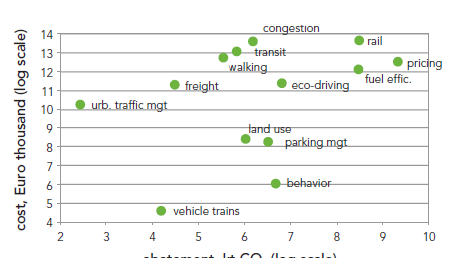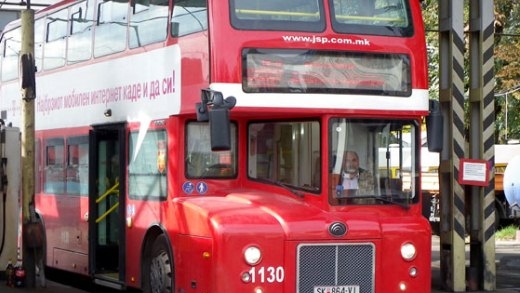Challenges of Climate Change: The transport sector is the second highest emitter in FYR Macedonia, producing about 14.5% of total greenhouse gas emissions. The sector is also emissions-intensive compared with other countries in the region: its contribution to global warming and local air pollution significantly exceeds technically unavoidable levels.
A high and growing share of road transport and the prevalence of old vehicles are the main factors driving high transport sector emissions, while vulnerability to climate change is heightened by the low quality of infrastructure and the vehicle fleet. In particular, the poor condition of roads and rail infrastructure, and the lack of public transportation prevent the transport sector from providing efficient services to the rest of the economy.
Car ownership and driving distances are projected to increase steeply, and so will emissions, as sprawling continues and personal mobility of Macedonians converges with the other Europeans. Projected increase in severe weather events will push the capital and operations and maintenance (O&M) of transport infrastructure costs up.
Opportunities for Green Actions: There are many possibilities that FYR Macedonia can embrace. The Fuel Efficiency package delivers the highest benefits and is most cost efficient. It consists of policy options that create incentives to use less fuel, either by using fuel-efficient technologies/driving mode, or by driving less, and includes such measures as a pricing signal (adjusting the fuel price and/or tax), encouraging purchase of fuel-efficient vehicles, eco-driving information campaigns and training, and use of vehicle trains.
On the other hand, the Rail Investment package provides the next highest benefits. This policy packaged is mainly aimed at increasing the availability of both freight and passenger rail service, together with increased energy efficiency of rail. Rail investment will result in significant co-benefits including reduced congestion, increased road safety, and lowered air pollution levels.
The Urban Development package is characterized by mutual complementarity of measures such as parking management improvements (Skopje), behavior change and travel planning, investment in urban and inter-urban transit, and land use planning and regulation.

It is also important to consider the overall cost of the policy options, especially from the point of view of financing and budget impact. The seeming lack of direct relationship between investment level and emission reduction outcome by policy option, is driven by the importance of policy complementarity and co-benefits.
The graph also illustrates the high abatement level delivered by certain policy options – a pricing signal, rail investment and encouraging purchase of fuel-efficient vehicles – as well as a relatively high level of abatement in combination with low cost of such measures as land use planning and regulation, parking management in Skopje, and behavior change by households.
The full text of the FYR Macedonia Green Growth Country Assessment can be found here.
